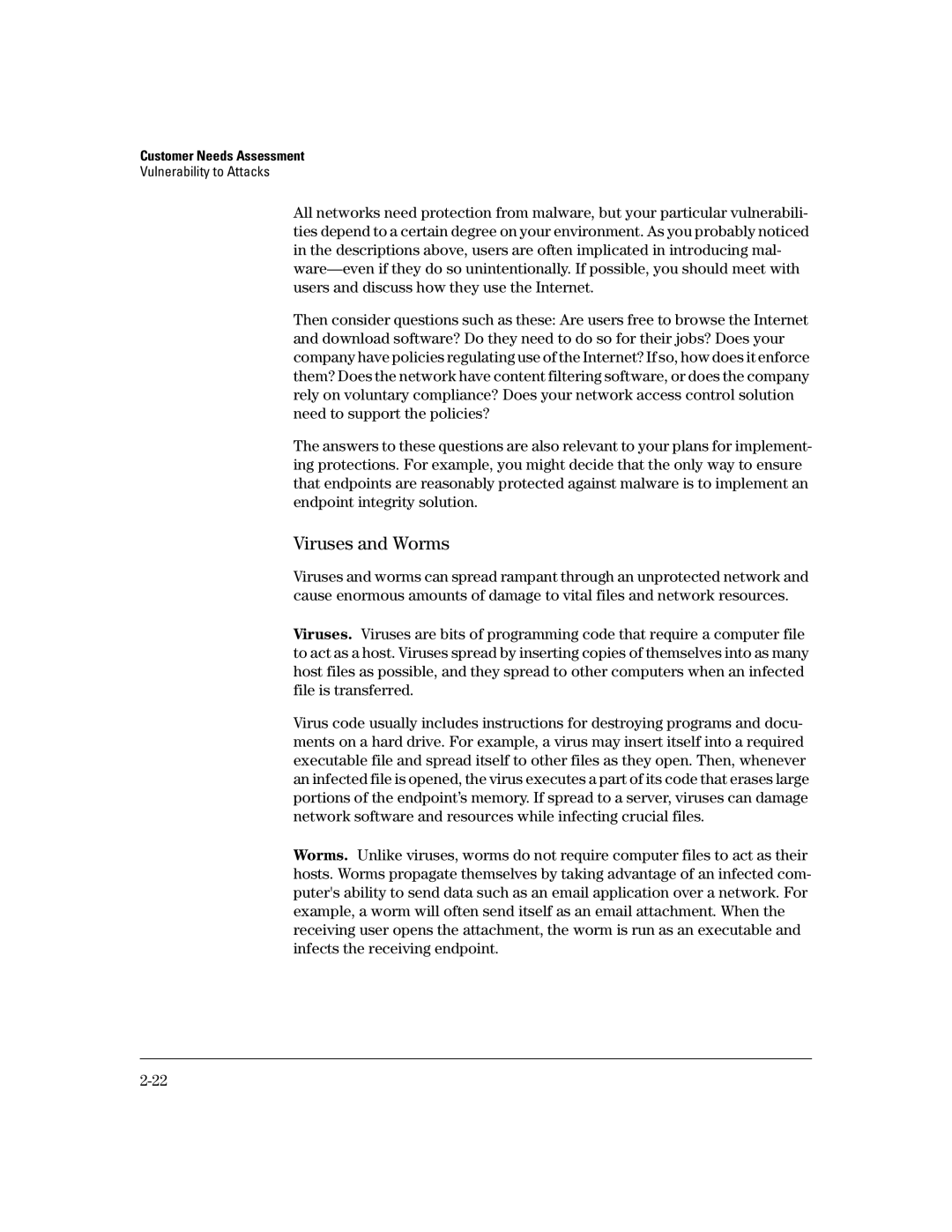Customer Needs Assessment
Vulnerability to Attacks
All networks need protection from malware, but your particular vulnerabili- ties depend to a certain degree on your environment. As you probably noticed in the descriptions above, users are often implicated in introducing mal-
Then consider questions such as these: Are users free to browse the Internet and download software? Do they need to do so for their jobs? Does your company have policies regulating use of the Internet? If so, how does it enforce them? Does the network have content filtering software, or does the company rely on voluntary compliance? Does your network access control solution need to support the policies?
The answers to these questions are also relevant to your plans for implement- ing protections. For example, you might decide that the only way to ensure that endpoints are reasonably protected against malware is to implement an endpoint integrity solution.
Viruses and Worms
Viruses and worms can spread rampant through an unprotected network and cause enormous amounts of damage to vital files and network resources.
Viruses. Viruses are bits of programming code that require a computer file to act as a host. Viruses spread by inserting copies of themselves into as many host files as possible, and they spread to other computers when an infected file is transferred.
Virus code usually includes instructions for destroying programs and docu- ments on a hard drive. For example, a virus may insert itself into a required executable file and spread itself to other files as they open. Then, whenever an infected file is opened, the virus executes a part of its code that erases large portions of the endpoint’s memory. If spread to a server, viruses can damage network software and resources while infecting crucial files.
Worms. Unlike viruses, worms do not require computer files to act as their hosts. Worms propagate themselves by taking advantage of an infected com- puter's ability to send data such as an email application over a network. For example, a worm will often send itself as an email attachment. When the receiving user opens the attachment, the worm is run as an executable and infects the receiving endpoint.
